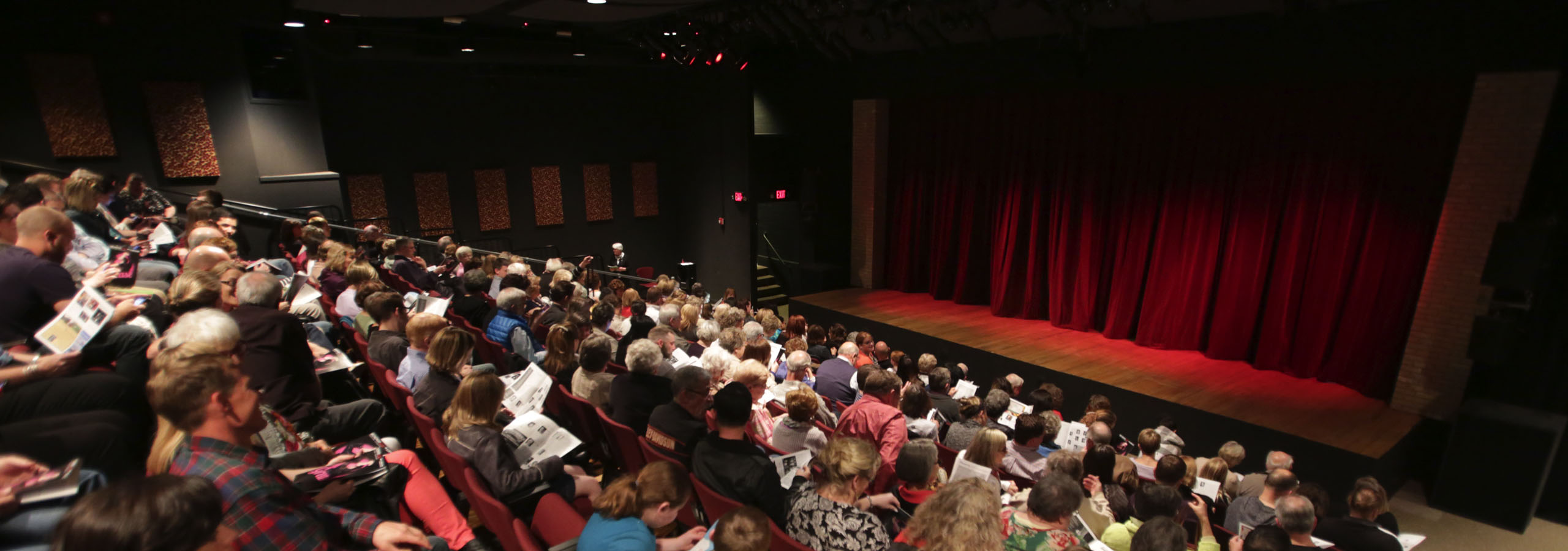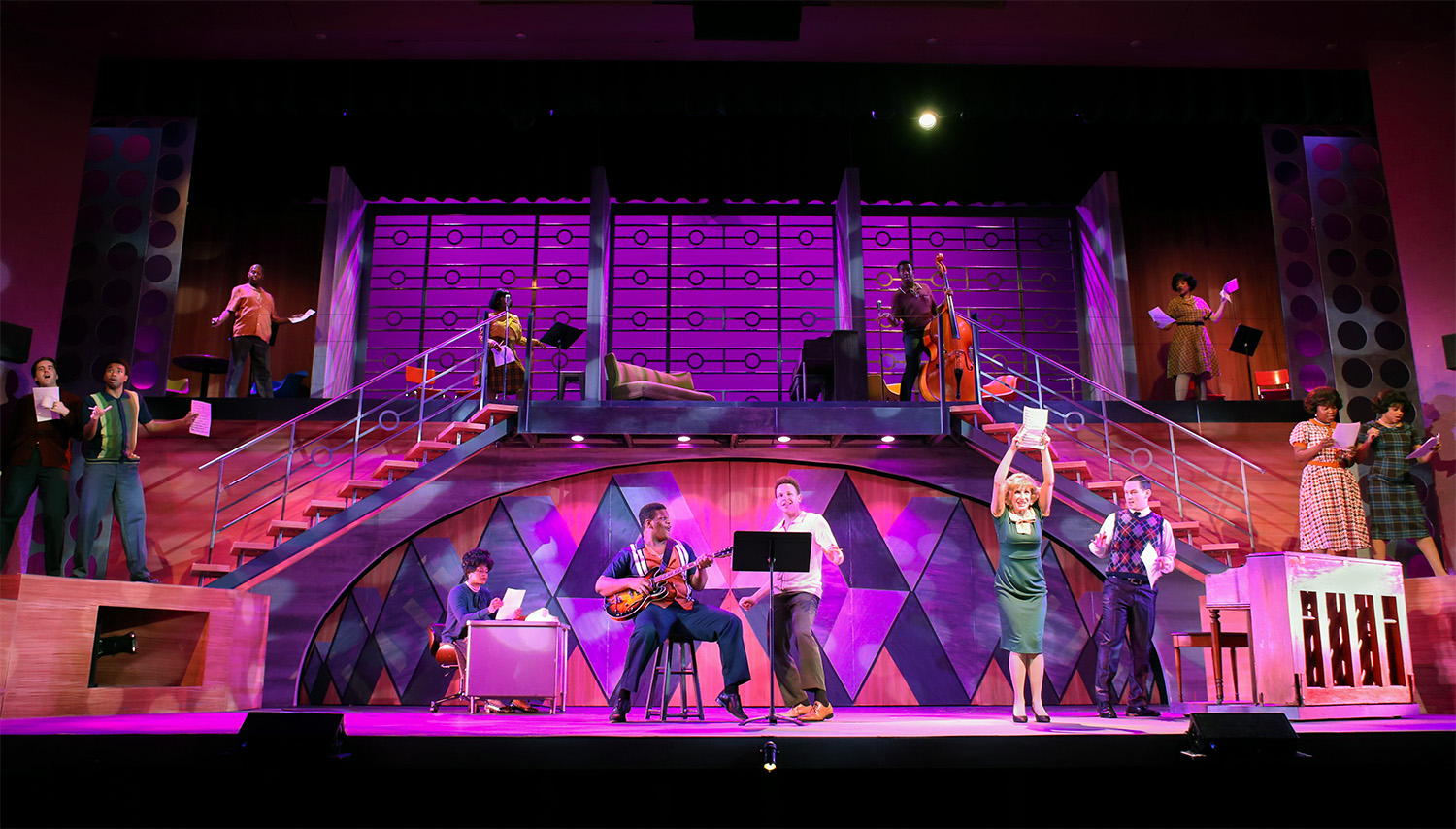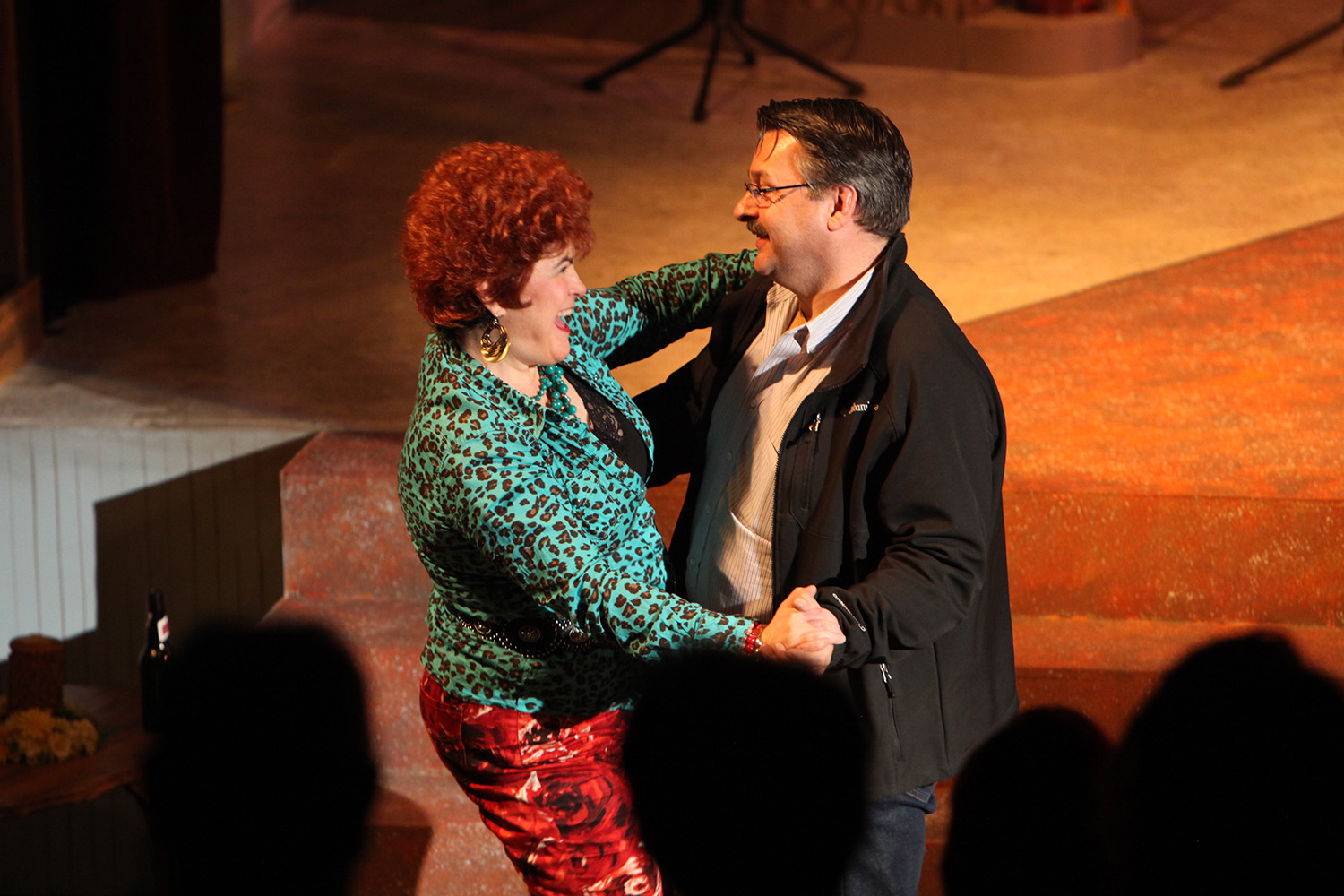
Behind the Scenes
THE ROLE OF IMPROVISATION IN LIVE THEATRE
Regards from Broadway Rose
Winter 2025
Part of theatre’s magic is that anything can happen on stage. Photo from our 2024 production of Beautiful: The Carole King Musical. Photo by Liz Wade.
Improvisation is an essential and often unexpected dynamic element in live theatre. While theatre productions are scripted, improvisation often plays a critical role in maintaining the mantra, “The show must go on.”
By definition, improvisation in theatre involves actors creating dialogue, characters, or scenes without a predetermined script. These unplanned, in-the-moment approaches challenge performers to think on their feet, collaborate with fellow actors, and engage directly with the audience. Where does this come into play in a scripted theatre production, you may ask? One thing you can count on when it comes to live theatre is that anything can and will happen, and it falls to the actors and theatre technicians to make sure things run as smoothly as possible, without the audience being any the wiser.
Have you ever been to a show where a set piece falls over? Or maybe the lights go dark halfway through a song? Some of you may recall last summer, during a performance of Beautiful, when the revolving set piece was compromised. As the weeks went on, the heat on stage from the lights and the friction of the turntable spinning caused the archway to warp, making it hit the top of the platform every time it spun. During one performance, it was just too much, and the archway began to fall. Never fear, though: theatre technicians were on stage with a ladder, performing in-the-moment repairs while the scene continued. The actors professionally remained in character, even throwing in an improvised line such as, “Yes, we are having some work done,” in reference to the technicians quickly working to repair the set.
Being able to improvise is a necessary tool for everyone in theatre, even those behind the scenes. Photo from our 2013 production of Always…Patsy Cline. Photo by Craig Mitchelldyer.
Could this situation have caused the performance to come to a stop? Absolutely. However, because of the quick thinking, professionalism, and adaptability of the actors and technicians, the show continued with only a minor hitch.
Actors and theatre technicians rely on one another to be consistent in their performances, but when the unexpected does happen, the situation can be dealt with quickly and efficiently without worrying about anything else falling apart.
During the rehearsal process, improvisation can also be utilized to explore characters and relationships, giving actors a chance to discover new facets of their roles which might not emerge from a script alone. This can lead to more nuanced performances that feel organic and alive. Once the lines, blocking, and scene/set changes are locked into place, the background work and research an actor has done can help them be prepared for the unexpected.
Ultimately, improvisation is a vital tool that allows live theatre to maintain its pulse as a truly interactive and living art form, offering fresh experiences for both performers and audiences alike. While the play may be scripted and rehearsed to perfection, there’s always a chance something may come up that surprises both the audience and the actors. It’s a reminder that in the world of theatre, no two performances are ever exactly the same.



